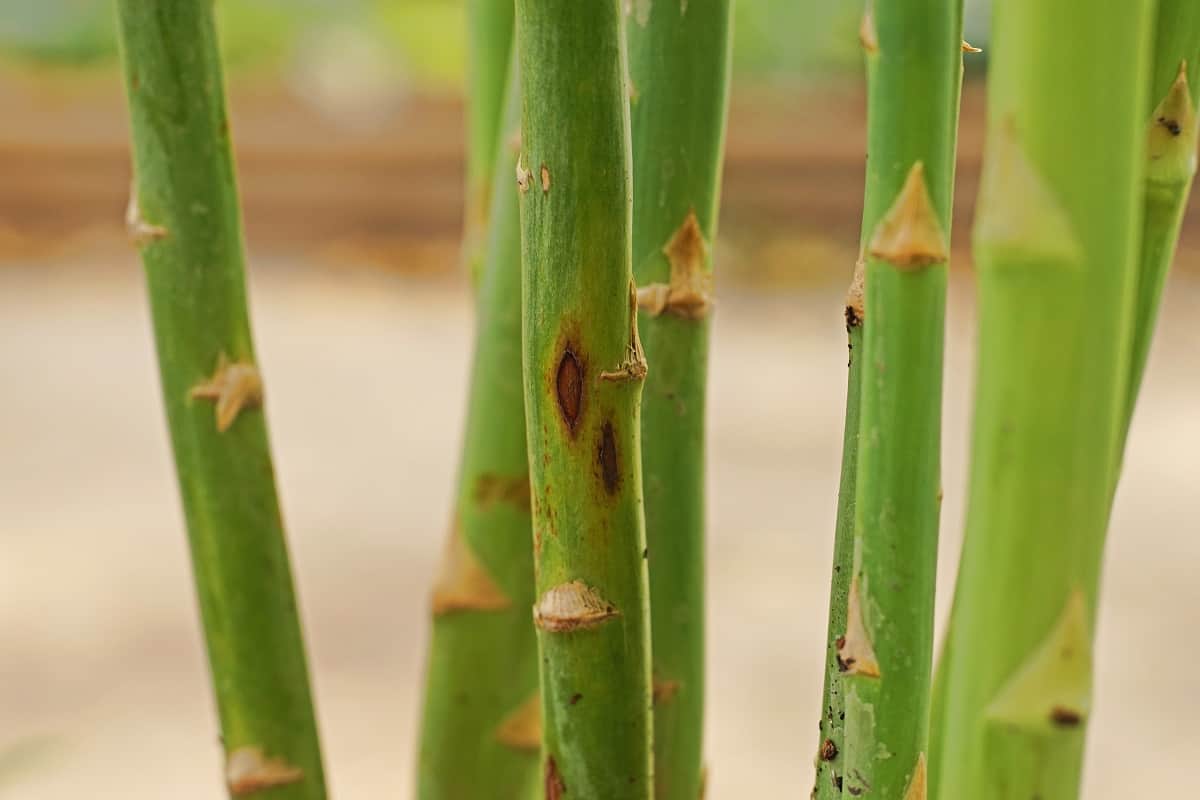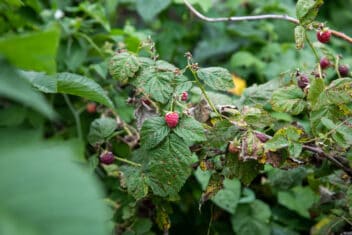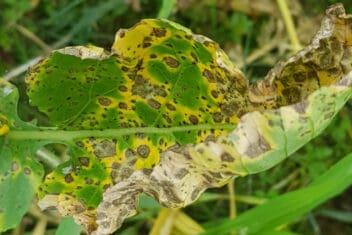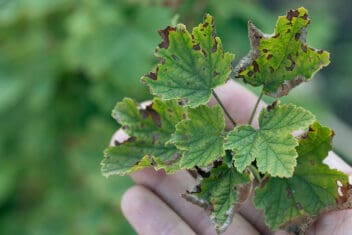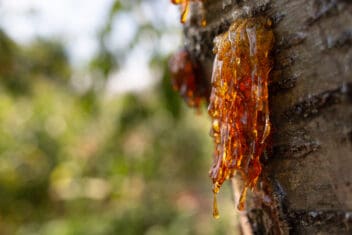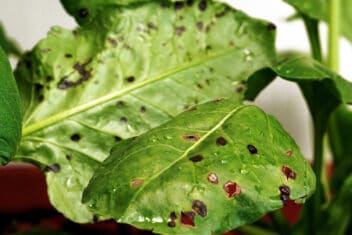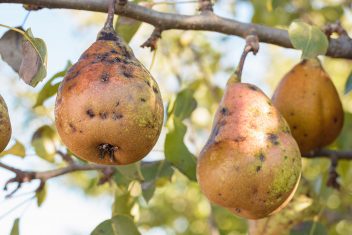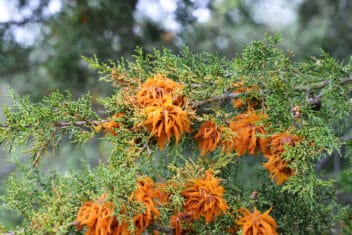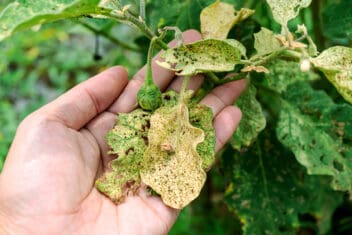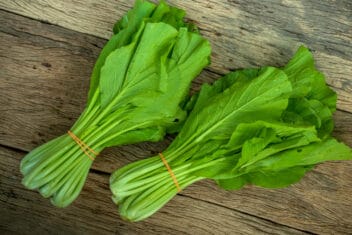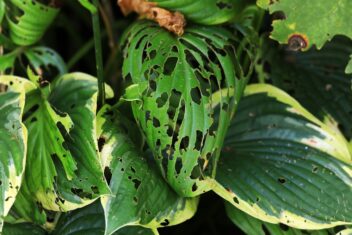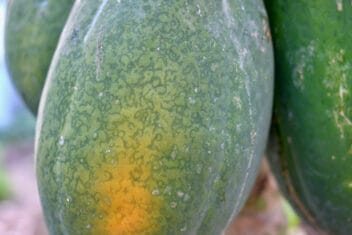I’ve never been very successful at growing asparagus.
The first year I grew asparagus, I completely ignored conventional wisdom (and planting instructions) and harvested asparagus shoots during the first growing season. Rookie mistake! You aren’t supposed to harvest asparagus until at least the second year, and even then it should be done sparingly so that the plants have time to get established.
The next year, I recognized my mistake. I waited and waited and waited to harvest…. and ended up not cutting any asparagus at all because by the point I had built up enough confidence to do so, the shoots were tough and woody.
This year is going to be my year. I felt so confident in my asparagus growing prowess that I even started some plants from seed – and they are doing very well. In preparing for my bumper crop, I did some preventative research about the most common asparagus diseases.
Here’s what you need to know.
10 Most Common Asparagus Diseases
1. Purple Spot
Purple spot is a disease that usually only affects asparagus plants, unlike many other diseases on this list that target plants of all kinds.
It’s pretty easy to diagnose. During particularly wet or windy weather, purple spots will develop on your spears. The good news is that the spots don’t affect the taste or texture of your asparagus spears, and they often disappear entirely during cooking.
The bad news is that, if you are trying to sell your spears or otherwise just care how they look, the purple spots will detract from their overall appearance.
Also, if left unattended, the spots can develop into full lesions and grow together into large blobs, ultimately killing affected tissue and defoliating the plants.
Most common in cool, damp weather, purple spots can be prevented by following good field sanitation. Cut back last year’s ferns and remove any plants affected by the disease.
2. Rust
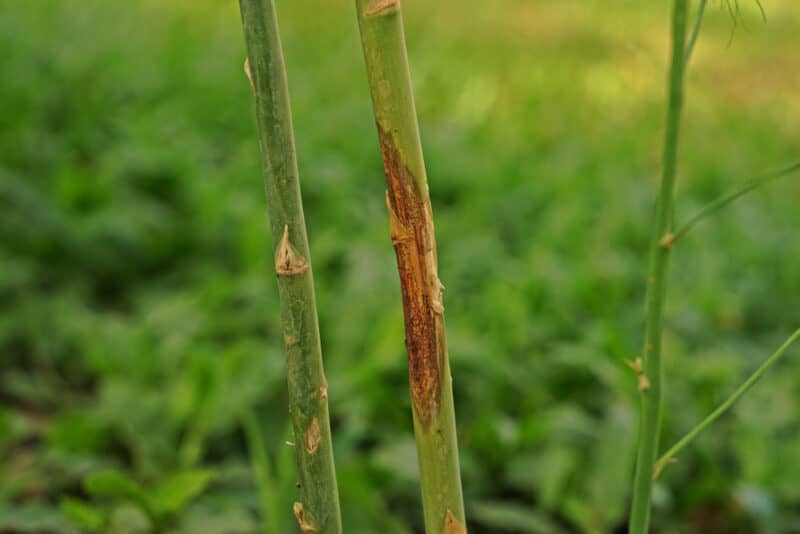
Rust is one of the most common asparagus diseases. It presents several symptoms depending on the season.
It first rears its ugly head in the early spring or early summer, appearing as small, raised lesions that are generally light green.
Eventually, these turn a whiter or orange color and become more sunken in. You might not notice them at first, but as they progress, additional lesions will appear around the base of the stems.
Then, the namesake rust develops. This occurs as the weather warms later in the summer. The first set of lesions will burst, disseminating spores into the air and infecting other plants. You’ll know it’s rust for sure if you brush the asparagus ferns and come away with your hands covered in a reddish tinge.
The problem does not go away as the weather cools, with black overwintering spores being produced that can weaken the stems the following spring. It can cause the whole plant to die back.
The easiest way to prevent rust is to cut back the ferns as they die over the winter. Dispose of the infected pieces. Although crop rotation isn’t really possible with asparagus since it is a perennial plant, avoid planting new beds in the same general vicinity as the old ones. You may have to use a fungicide to kill existing spores.
Of course, fungal spores are more likely to infect plants when they are damp from rain or dew. Planting in a location that is sunny and somewhat breezy can help the plants dry out.
3. Fusarium Crown Rot
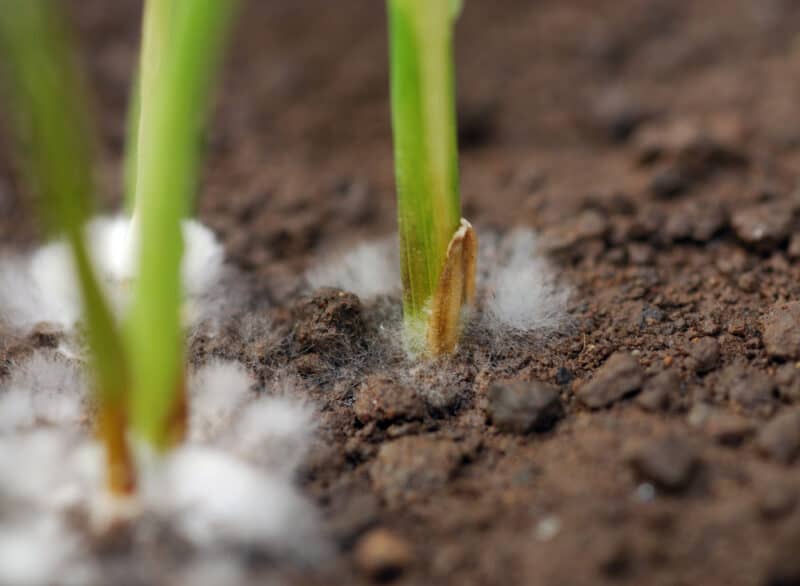
Fusarium crown root is generally caused by one of three species of Fusarium fungus: Fusarium oxysporum f. sp. asparagi, Fusarium proliferatum, and Fusarium moniliform.
This issue, also known simply as Fusarium disease, can cause yellowing, dry rot, wilting, and eventual plant death. It’s a soil-borne fungus that kills plants quickly after it infects them with red-brown lesions. It typically causes the roots to rot and die immediately, too.
Unfortunately, this disease is hard to prevent and get rid of. Crown rot can live in soil for a long period, spreading through infected air, soil, and seeds.
Plants that are stressed are more likely to be infected, so keeping up good cultural practices to avoid stressing your plants is essential. You should also work to improve drainage so that the soil does not remain soggy.
A simple way to prevent the disease is to keep the area around the asparagus beds free from weeds – these can harbor fungal spores and make it tough for you to get rid of the disease in the future.
Don’t harvest your asparagus plants continuously throughout the season, but let them rest periodically so that you don’t overstress them. Being consistent with fertilization and irrigation is also essential.
4. Blight
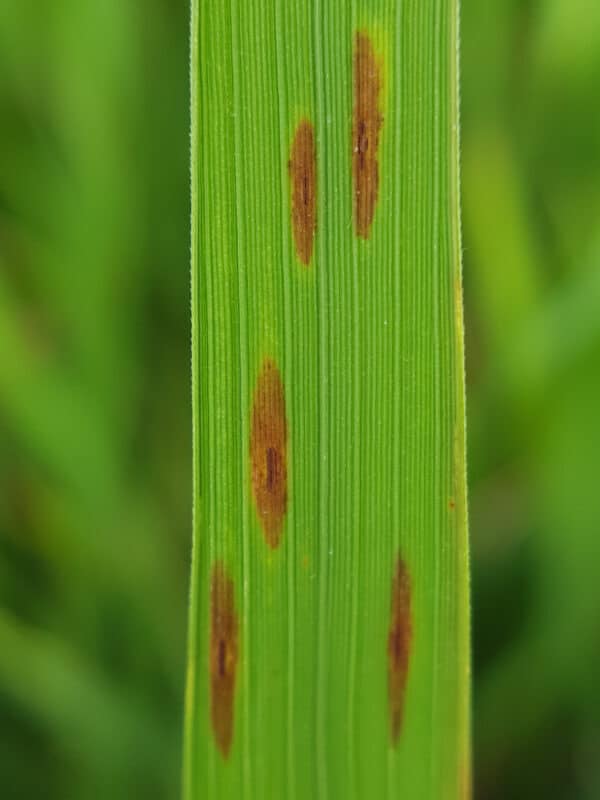
Blight, also known as Cercospora blight, is caused by Cercospora asparagi fungus. It causes gray or tan lesions to form on needles and small branches of plants, with each lesion surrounded by a red-brown border. These spores, like other fungal spores, are distributed by wind and rain.
As you might expect, this disease is more common during periods of wet weather. It can cause poor photosynthesis and a reduction in plant yields. Over time, it can reduce the longevity of your plants.
To prevent blight, water in the morning so that the foliage has time to dry off. Make sure plants are spaced in rows 6-feet apart so that air can move among the plants to dry them off. You may have to get rid of infected plants, but some fungicides can be effective at getting rid of this disease, too.
5. Dead Stem
Dead stem is a fungal plant pathogen that is closely related to the pathogens responsible for common root rot, stalk rot, ear blight, and other diseases that can affect asparagus and other plants like cereal grains.
Another soil-borne fungus, this disease can spread through infected seeds. Using sterilized equipment, seeds, and growing supplies is essential. There are several resistant cultivars to the dead stem that you can grow and again, making sure the soil is healthy and clear of disease before planting is also essential.
6. Phytophthora Crown, Root, and Spear Rot
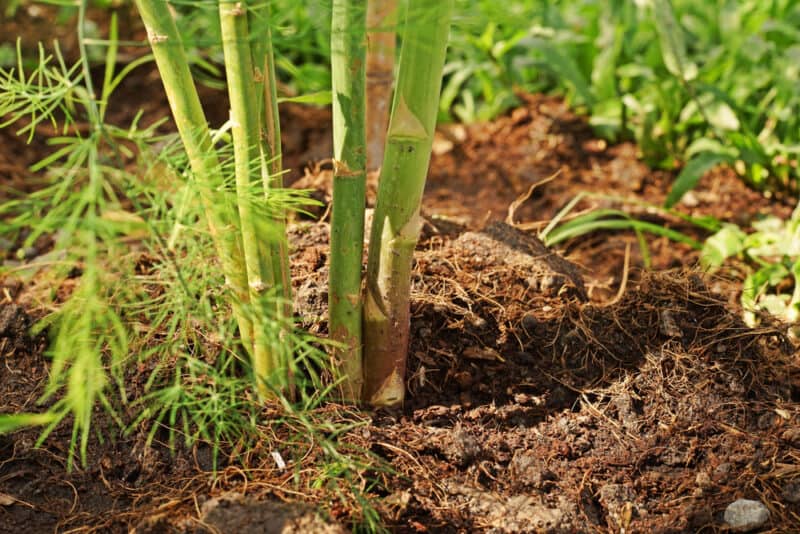
This disease is also fungal, caused by the pathogen Phytophthora asparagi. It is most common when soils are wet and starts as soft, water-soaked lesions that begin on the plant just above the soil line. Plants that are infected often become yellow, and you may find that the crowns die off, too.
Crown, root, and spear rot, left untreated, can dramatically shorten the lifespan of your plants.
This disease is best prevented by avoiding planting in wet areas. You can also apply fungicides to get rid of it should it set in.
7. Watery Soft Rot
The good news is that this disease of asparagus is relatively uncommon. It results in watery-looking lesions on your plants that eventually enlarge to look like white mold. Advanced stages of the disease may cause hard black growths.
This disease is often confused with Fusarium rot – it’s only when the mold develops that you can truly tell the difference. It is often spread from plant to plant and is more likely to affect plants that have been wounded somehow. Avoid over harvesting your plants and use sterile tools when you do so. Again, maintaining proper watering and soil conditions is ideal.
8. Asparagus Mosaic Virus
There are few viral diseases to which asparagus is prone, but asparagus mosaic virus is one of them. This disease often goes unnoticed with very few visible symptoms. However, it can dramatically decrease your yields and make your plants more likely to suffer from other diseases.
Occasionally the virus will also cause a “mosaic” pattern of light and dark green mottling on the plant.
Removing infected plants can help, as can moving plants to new spots if the virus has been detected in the original planting location. The virus can sometimes be seed-borne, so make sure you are using certified seed stock to start your plants. Pests like aphids can also spread it, so you will have to control insects in your garden as well.
This virus can overwinter on your plants so clean up the garden after each growing season and keep weeds under control.
9. Zopfia Root Rot
Zopfia root rot is an asparagus-specific disease that can lead to root rot when plants are wounded or weakened. It spreads slowly in the rhizome at first, but then moves quickly in the roots, forming dark cankers.
Again, this disease can be tough to treat and prevent, but following good watering and ventilation practices can help keep it at bay.
10. Gray Mold Shoot Blight
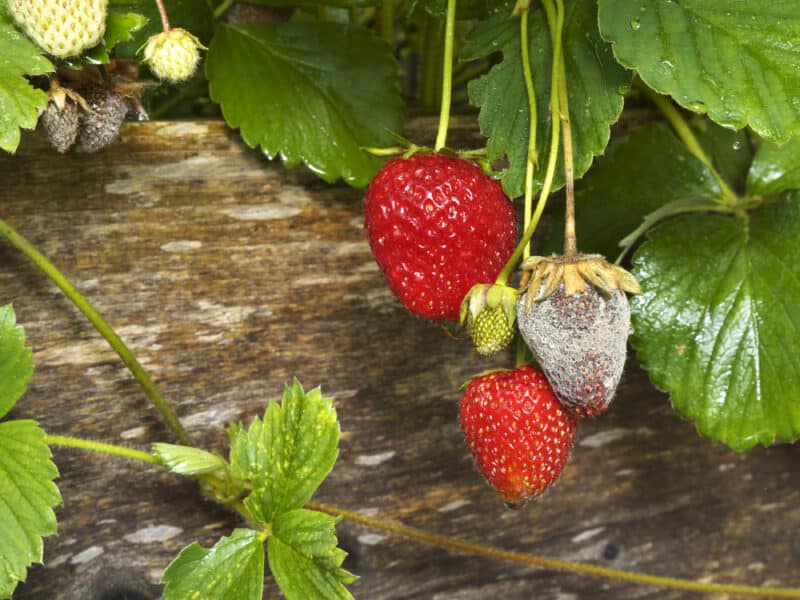
Gray mold shoot blight, often known simply as gray mold, is caused by a fungus named Botrytis cinerea. It affects many kinds of plants in addition to asparagus, such as strawberries and wine grapes.
The most obvious sign of an infestation is the development of gray masses and rot. It is most common in wet, humid conditions and in soils with a low pH. Standing water harbors spores and makes it possible for the disease to live a long time in the soil.
Avoid placing your asparagus plants too close together and water first thing in the morning so the plants have time to dry out at night. Ventilation and airflow are crucial in preventing this disease. You should also avoid over fertilizing with excess nitrogen, as it can increase the incidence of disease.
Finally, be sure to harvest asparagus every year (after the first year, of course). There’s evidence that regularly pruning and purposely removing bits of plants can help keep this disease at bay. There are some fungicides you can use, too, but many strains of this fungus are resistant, so you’ll have to use them sparingly.
How to Prevent Asparagus Diseases
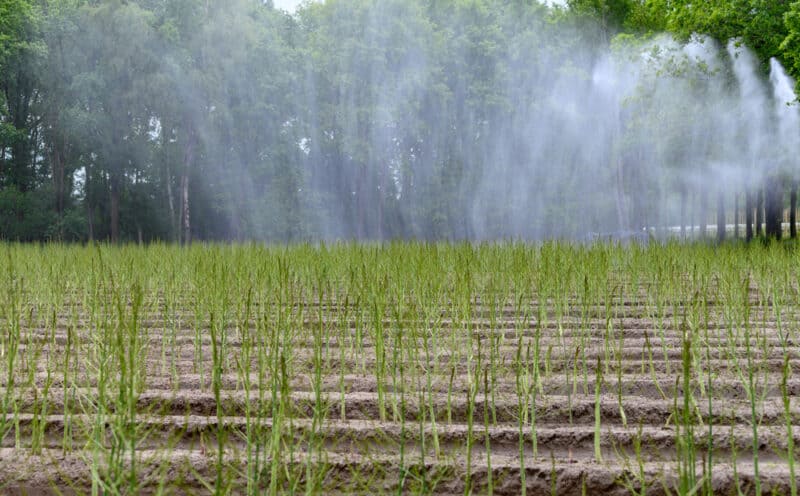
When it comes to preventing and treating asparagus diseases, it’s important to act early and often. Proper watering and ample amounts of air circulation are doubly important to make sure your plants don’t suffer from any life-threatening illnesses.
Even if you take all the proper preventative measures, though, it is still possible for your plants to suffer at some stage in their life. After all, asparagus plants live quite a long time – several decades, in some cases – so some hardship is inevitable.
Again, treating your plants early is essential. There are various fungicides you can use to control many fungal diseases.
Otherwise, follow the tips above for preventing and treating each disease and you’ll be able to enjoy a bumper crop of tasty, tender shoots for years to come.
